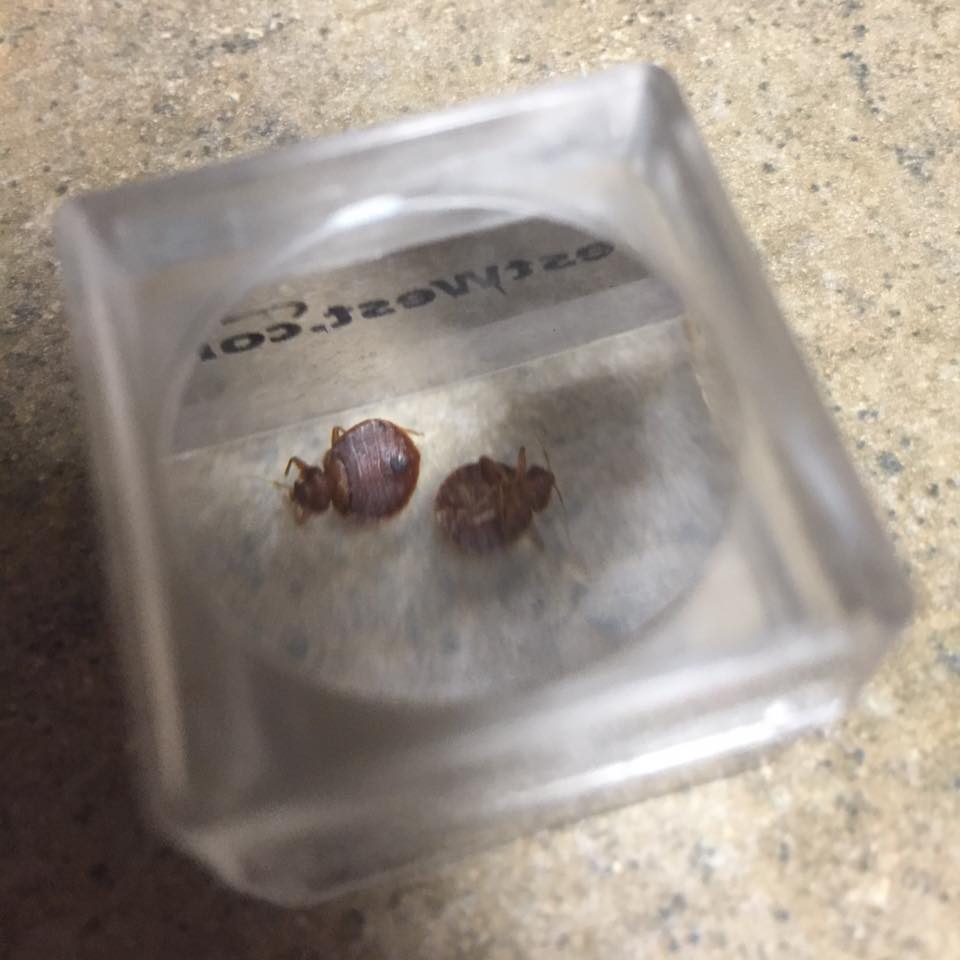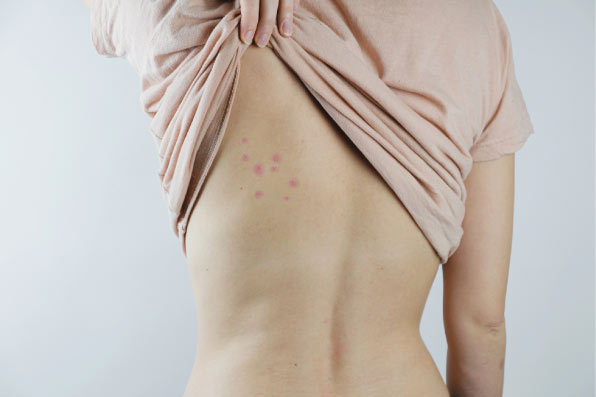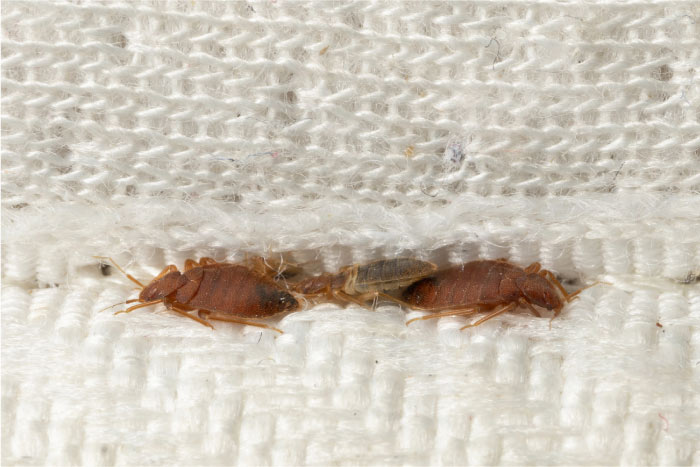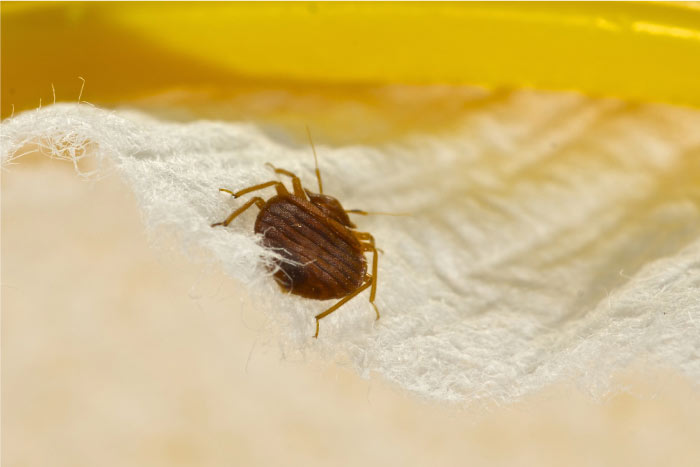Bed Bug Bites: Your Guide to Identification and Action
Nothing ruins a good night’s sleep faster than waking up to mysterious, itchy welts. If you suspect an infestation, your first question is likely: what does bed bug bites look like? Identifying these bites is the critical first step in confirming you have a bed bug problem, and that’s where the professional pest control team can help.

The Distinctive Look of Bed Bug Bites
Bed bug bites often look like small, red, raised bumps, similar to mosquito or flea bites. They can appear anywhere on the body but are most commonly found on areas exposed while sleeping.
Unlike flea bites, which tend to be around the ankles, bed bug bites usually target the face, neck, arms, and hands. The key to identifying them is not just the size but the pattern in which they appear.

Recognizing the Signature Pattern
Bed bugs are notorious for feeding on their host multiple times in a single night. This creates a recognizable grouping known as a “breakfast, lunch, and dinner” pattern.
- Linear or Zigzag Lines: The bites often appear in a straight line or a cluster of three to five.
- Clustered Groupings: They may also appear as dense groups on small patches of skin, such as the forearm or shoulder.
- Size and Color: They are generally tiny, red, and swollen, with a distinct red spot or dark center where the mouthpart penetrated the skin.
If you’re waking up to this specific pattern, it’s a strong indication you are dealing with more than just a stray mosquito. Understanding what does bed bug bites look like is essential for determining if you need Bed Bugs control or another service like Earwigs control.

Comparing Bed Bug Bites to Other Pests
It can be difficult to tell a bed bug bite from a bite caused by another insect. Because different pests require different removal methods, correct identification is essential for effective treatment.
| Pest | Appearance & Location | Key Difference |
|---|---|---|
| Mosquitoes | Randomly scattered, large, puffy welts. | Appear anywhere, especially on uncovered skin; not in a linear pattern. |
| Fleas | Small, intensely itchy red dots, often found in clusters on the lower legs, ankles, or feet. | Rarely appear in the linear "breakfast, lunch, and dinner" pattern on the upper body. |
| Spiders | Usually only one bite, often with two puncture marks. | Bites are solitary, not clustered or linear. If you suspect a bite, you may need Spiders control. |
Do Bed Bug Bites Always Cause a Reaction?
It is important to note that not everyone reacts to bed bug bites. Up to 30% of people may not show any physical sign of a bite at all.
Even for those who do react, the time it takes for a welt to appear can vary greatly, from a few minutes to up to 14 days.
This delayed reaction can make it harder to pinpoint when the bites occurred.

Why You Should Never Wait to Act
Discovering bed bug bites is a clear indication of a potential infestation. Bed bugs reproduce rapidly, and a small infestation can quickly escalate into a severe problem. Early detection and treatment are crucial to preventing them from spreading throughout your home and infesting furniture, walls, and clothing.
Furthermore, while bed bugs are not known to transmit disease, excessive scratching can lead to secondary skin infections. The Centers for Disease Control and Prevention provides additional details on the health impact of bed bug infestations.
If you’ve identified the characteristic linear pattern of red, itchy bites, it’s time to call pest control experts.
If you have bites, but are also seeing small black droppings, it could indicate another issue, which is why we also offer Roaches control.
Common Questions About Bed Bug Bites (FAQs)
How long do bed bug bites last?
The irritation from bed bug bites typically clears up within one to two weeks without any medical treatment. Over-the-counter creams, lotions, and antihistamines can help manage the itchiness and swelling during this time.
Are bed bug bites dangerous?
No, bed bug bites are generally not dangerous. They do not transmit diseases to humans. However, some people may experience allergic reactions, and scratching the bites can lead to secondary bacterial skin infections.
Where do bed bugs bite the most?
Bed bugs prefer to bite exposed skin while you are sleeping. Common areas include the arms, hands, neck, face, and shoulders. They will not bite through clothing or blankets.
When do bed bugs feed?
Bed bugs are primarily nocturnal, meaning they are most active and feed during the night when people are sound asleep. They are attracted by the carbon dioxide we exhale and our body heat.
Can I treat a bed bug problem myself?
While home remedies and DIY products might offer temporary relief, severe infestations require professional treatment. Bed bugs are highly resilient and often hide in hard-to-reach places, making complete elimination difficult for homeowners.
Reclaim Your Peace of Mind with Professional Pest Control
When the telltale signs of bites confirm your fears, you need a solution you can trust. Dan’s Pest Management is a locally owned and operated family business dedicated to protecting homes and businesses in Bakersfield, CA.
We use advanced equipment and personalized solutions to not only eliminate current infestations but also prevent them from coming back. We believe in going the extra mile to provide exceptional service, ensuring your peace of mind is restored.
Don’t let bed bugs—or any other pest like those requiring Ticks control—keep you up at night. Contact us today for a free estimate and discover why we are Bakersfield’s trusted choice for reliable pest control. If you know someone else who is dealing with this frustrating issue, let them know about our Referral program!
